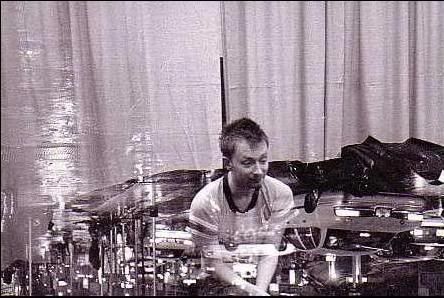ENGL 1020: Blog Post I
1) Consider a website that you visit often, or one you visited once that made a strong impression upon you. What is the focal point of the site? What are some conventions of websites as a genre & how does the site adhere to them? Does the site alter these conventions in anyway? How so? Furthermore, how does the medium of blogging & other forms of web-based writing differ from that of traditional print/paper-based writing? Provide specific examples in your post. Hint: It might be helpful to insert a hyperlink to the site you write about.
*************************************************************************************
At first glance, Radiohead’s official website provides the end-user with a traditional, albeit morbid, welcome: a homepage that contains a central (skeletal) image linked to a table of contents (TOC).
*************************************************************************************
At first glance, Radiohead’s official website provides the end-user with a traditional, albeit morbid, welcome: a homepage that contains a central (skeletal) image linked to a table of contents (TOC).

While much could be said about the image itself, a more salient issue awaits the guest once (s)he enters the site. The TOC offers several avenues of exploration; some are self-evident (“TOUR TICKETS” & “MSGBOARD”), while others are not. One link that does not clearly articulate itself through definition is “SCRAPBOOK.” Clicking on the “SCRAPBOOK” tab directs the user to a page that contains a series of buttons with individual words upon them. The buttons form, based upon the viewer's perspective, either a tree or a mushroom cloud.
If one clicks a button—for the sake of discussion, let us choose one of the “witch” buttons—the site re-directs the user to another page. In this case, the site loads a white page that contains one transparent box, outlined in black, with the text “i’m stuck/ in the tardis/ trapped in/ hyperspace” in turquoise print. If one places the cursor over the box, a second box partially overlaps the first & contains the text “one minute/ snake charming/ the next in/ a motorcade.” The site offers the users a choice: click on the original box or drag the cursor to the second. Dragging the cursor to the second results in the appearance of a third box with an equally enigmatic inscription.
Allowing for the process to continue until it terminates—this happens to be after seven boxes—the user must click the text of the final box. The site then loads a screen similar to the one just departed, the only difference being that a new, solitary box with a different inscription awaits for the user to repeat the process just completed. If one once again follows the trail of boxes to its terminus & clicks on the final box, the site directs (s)he to a new page, this time with a B&W photo of Thom Yorke double-exposed over an inverted rain slicked street filled with cars.

Three “witch” buttons, identical to those on the original “SCRAPBOOK” page are below the picture. It appears as though this process could continue infinitely. Luckily, there is a “LEAVE” button in the bottom right-hand corner. To exit, one must click it.
As a website functioning under WWW protocol, Radiohead.com must utilize hyperlinks so the end-user may access additional pages related to the page the browser currently displays. As far as conventions of the genre are concerned, the site is in accordance with standard implementation. What is not conventional about Radiohead.com is the type of relations the designers seek to make between pages. Whereas a conventional site will provide users with links that typically have a functional, analogous, or symbiotic relation to the currently loaded page, Radiohead.com provides users with links that are seemingly random in nature & lacking logical associations.
But one familiar with Radiohead's music & creative process should not find this aspect of their website surprising. In a late-90s interview, Thom Yorke once said that his lyrics sometimes are "drawn randomly from a hat in a process inspired by artist Tristan Tzara, whose instructions for 'How to make a Dada poem' [once] appeared on Radiohead's website." The apparent absence of convention qua web-design becomes overtly conventional qua Dada's illogical & haphazard sentiments.

3 comments:
I took pleasure in reading your post.
It was well formatted and the line breaks assisted in separating the various ideas in the piece. Also, the images you inserted were relevant to what you were referring to and assisted me in picturing the site.
The assignment and the criteria were followed closely, and it was helpful to have the assignment posted at the top of the post so I knew what exactly your writing was in regards to.
In addition, the vocabulary in the post was well articulated and fresh and kept my attention to the writing.
Excellent post, I look forward to reading more.
I want to write like you sir. I read your blog on the webpage before I began doing mine and I realized something. I myself isnt a good observer/reader/writer. Very interesting details reagarding the criteria of the blog and kudos for writing it in the first place. Thanks for posting it and sharing it with the entire class looking forward to more of the future posts.
Fu, I am sure you are a better writer than you believe.
Post a Comment